Did you know that your roof plays a significant role in your home’s energy efficiency? While it’s easy to overlook, the right roofing system can help lower energy bills, improve comfort, and even reduce your environmental impact. At Pinnacle Roofing, we understand the connection between your roof and energy consumption. Here’s everything you need to know about how your roof impacts your home’s energy efficiency—and how to make it work for you.
1. How Your Roof Affects Energy Efficiency
Your roof acts as a barrier between your home and the outdoor elements. Its condition, material, and design can either help regulate indoor temperatures or make your HVAC system work harder. Here are some key factors that influence energy efficiency:
- Insulation: A well-insulated roof prevents heat from escaping during winter and keeps your home cooler during summer.
- Ventilation: Proper roof ventilation reduces heat buildup in your attic, keeping your home more comfortable and less reliant on air conditioning.
- Roof Color and Material: The color and material of your roof affect how much heat it absorbs or reflects. For instance, lighter-colored and reflective materials are better at deflecting heat.
When your roof is optimized for energy efficiency, it can significantly reduce the strain on your heating and cooling systems.
2. The Impact of Poor Roofing on Energy Bills
A poorly maintained or outdated roof can have a major impact on your energy bills. Common issues include:
- Leaks and Drafts: Cracks or damage in the roofing system can let hot or cold air escape, forcing your HVAC system to work overtime.
- Inadequate Insulation: Without sufficient insulation, your home loses heat in the winter and absorbs too much heat in the summer.
- Improper Ventilation: A lack of proper ventilation causes heat to accumulate in your attic, raising indoor temperatures and increasing cooling costs.
Addressing these issues can help lower energy bills and enhance the comfort of your home.
3. Energy-Efficient Roofing Materials
Choosing the right roofing material is one of the best ways to improve your home’s energy efficiency. Here are some popular options:
- Cool Roofs: Made with reflective materials, cool roofs reflect more sunlight and absorb less heat, keeping your home cooler in the summer.
- Metal Roofing: Highly durable and reflective, metal roofs are an energy-efficient option that can last for decades.
- Clay and Concrete Tiles: These materials offer natural insulation and airflow, helping to regulate indoor temperatures.
- Asphalt Shingles with Cooling Properties: Modern asphalt shingles are available with reflective coatings that enhance energy efficiency.
Discussing your options with a roofing professional can help you select the best material for your home and climate.
4. The Role of Attic Insulation and Ventilation
Your attic and roof work together to regulate your home’s energy performance. Here’s how:
- Insulation: Proper attic insulation reduces heat transfer, helping your home stay warmer in winter and cooler in summer.
- Ventilation: Ventilation prevents heat and moisture buildup, which can damage your roof and increase energy costs. A well-ventilated roof maintains a balanced temperature, reducing strain on your HVAC system.
Upgrading insulation and ensuring proper ventilation are cost-effective ways to improve energy efficiency.
5. Solar Panels and Roofing
If you’re considering going green, solar panels are an excellent option. However, the condition of your roof is critical before installation. Here’s why:
- Roof Condition: Solar panels are a long-term investment, so your roof must be in good shape to support them for years to come.
- Energy Savings: Solar panels work alongside an energy-efficient roof to maximize savings by reducing electricity usage.
At Pinnacle Roofing, we can assess your roof’s condition and help prepare it for solar panel installation.
6. How Regular Maintenance Saves Energy
Routine roof maintenance is essential to keep your roof energy-efficient. Key maintenance steps include:
- Checking for Damage: Inspecting for missing shingles, cracks, or leaks helps prevent heat loss or gain.
- Clearing Debris: Removing leaves and debris ensures proper drainage and prevents damage that could affect energy performance.
- Updating Old Materials: Replacing worn-out or inefficient materials with modern, energy-efficient options boosts your roof’s performance.
Regular maintenance not only extends your roof’s lifespan but also keeps your energy bills in check.
7. Reaping the Benefits of Energy-Efficient Roofing
Investing in energy-efficient roofing offers several advantages:
- Lower Energy Bills: An efficient roof reduces heating and cooling costs year-round.
- Increased Comfort: Better insulation and ventilation mean more consistent indoor temperatures.
- Environmental Impact: Using less energy reduces your home’s carbon footprint, making your home more eco-friendly.
- Higher Resale Value: Energy-efficient upgrades, including roofing, can make your home more attractive to buyers.
The long-term benefits of an energy-efficient roof make it a worthwhile investment for any homeowner.
Conclusion
Your roof is more than just a protective covering for your home—it’s a critical component of your home’s energy efficiency. By choosing energy-efficient materials, ensuring proper insulation and ventilation, and scheduling regular maintenance, you can lower your energy bills and improve your home’s overall performance.
At Pinnacle Roofing, we’re here to help you achieve a roof that not only looks great but also works efficiently to save you money. Contact us today to learn more about energy-efficient roofing solutions and schedule an inspection!
Pinnacle Roofing is GAF Master Elite Two Star President’s Club residential roofing company with over 10+ years of experience operating in central Kentucky. Google Guaranteed. A+ rated by the BBB. Veteran-owned.


